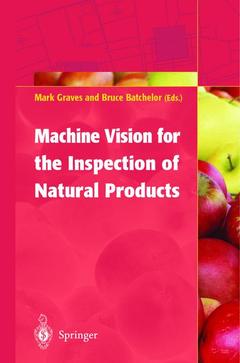Machine Vision for the Inspection of Natural Products, Softcover reprint of the original 1st ed. 2003
Coordonnateurs : Graves Mark, Batchelor Bruce

- Case studies based on real-world problems to demonstrate the practical application of machine vision systems.
- In-depth description of system components including image processing, illumination, real-time hardware, mechanical handling, sensing and on-line testing.
- Systems-level integration of constituent technologies for bespoke applications across a variety of industries.
- A diverse range of example applications that a system may be required to handle from live fish to ceramic tiles.
Machine Vision for the Inspection of Natural Products will be a valuable resource for researchers developing innovative machine vision systems in collaboration with food technology, textile and agriculture sectors. It will also appeal to practising engineers and managers in industries where the application of machine vision can enhance product safety and process efficiency.
Inspection of any production process can be tedious and repetitive and humans make mistakes.
This book shows how even natural products with a high degree of variation can be subjected to the untiring and less error-prone inspection of a machine.
Gives practical advice on the implementation of systems for the inspection of a wide variety of naturally occurring materials from stones to live animals.
Includes supplementary material: sn.pub/extras
Date de parution : 10-2013
Ouvrage de 471 p.
15.5x23.5 cm
Disponible chez l'éditeur (délai d'approvisionnement : 15 jours).
Prix indicatif 116,04 €
Ajouter au panierDate de parution : 11-2003
Ouvrage de 471 p.
15.6x23.4 cm



